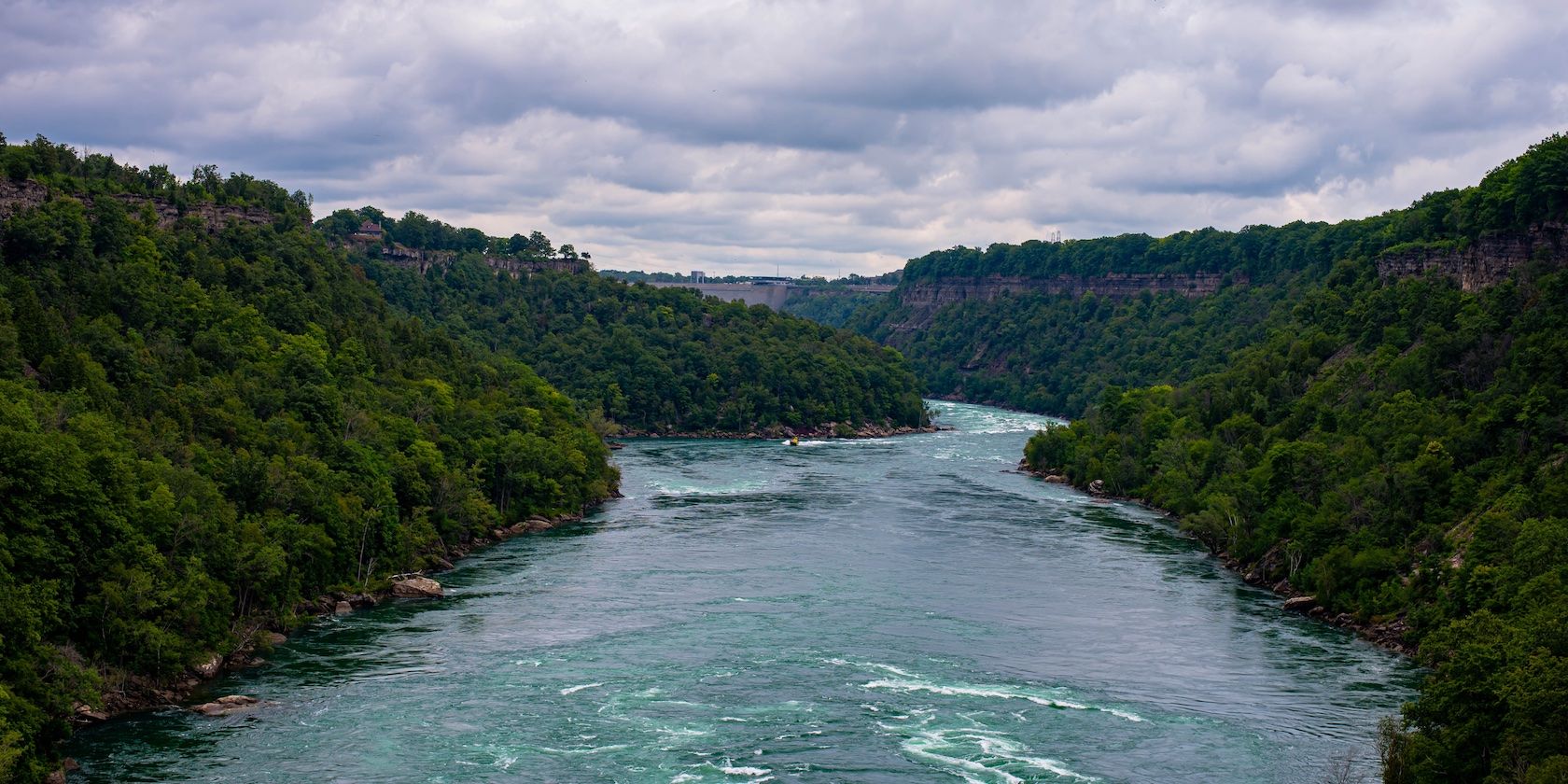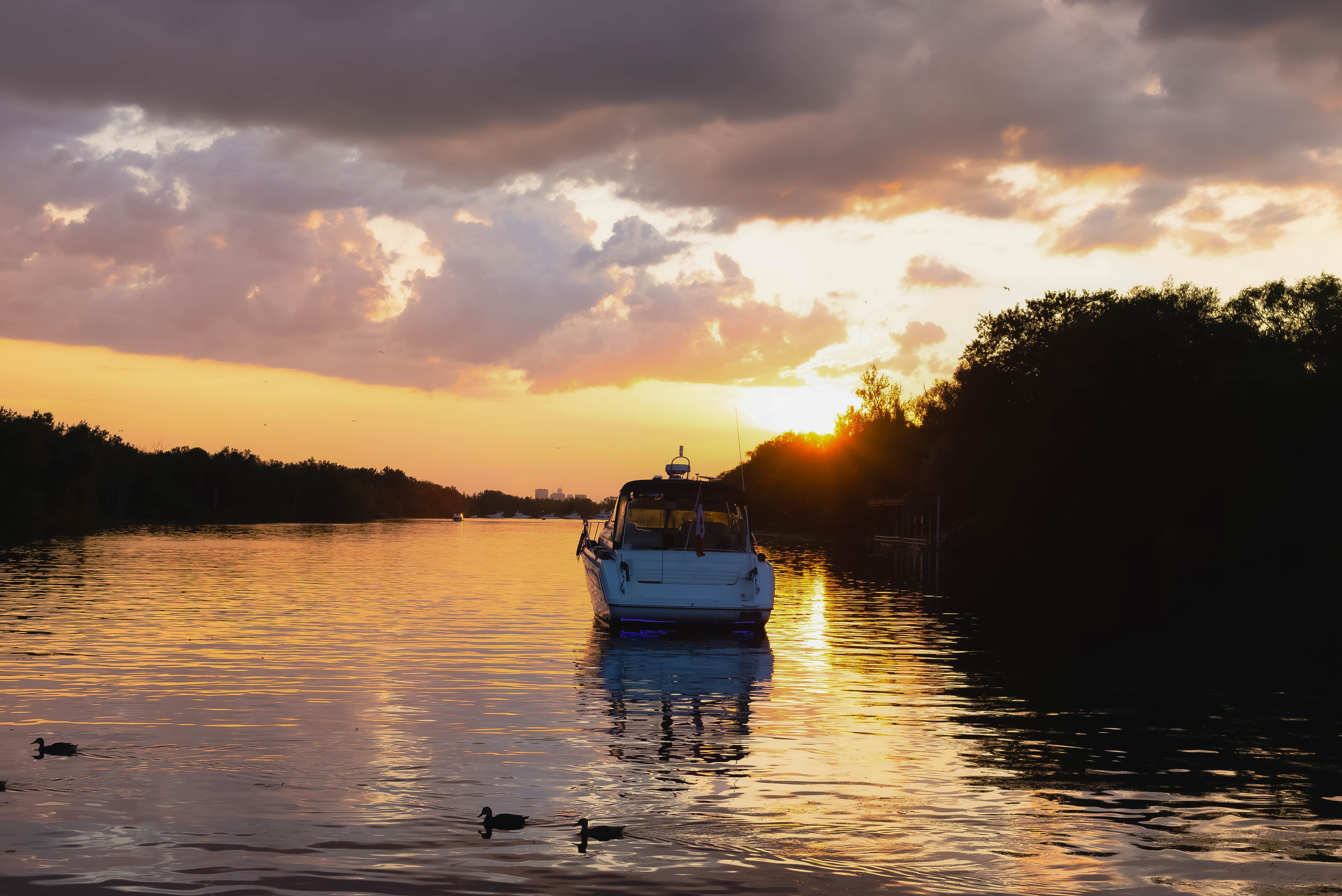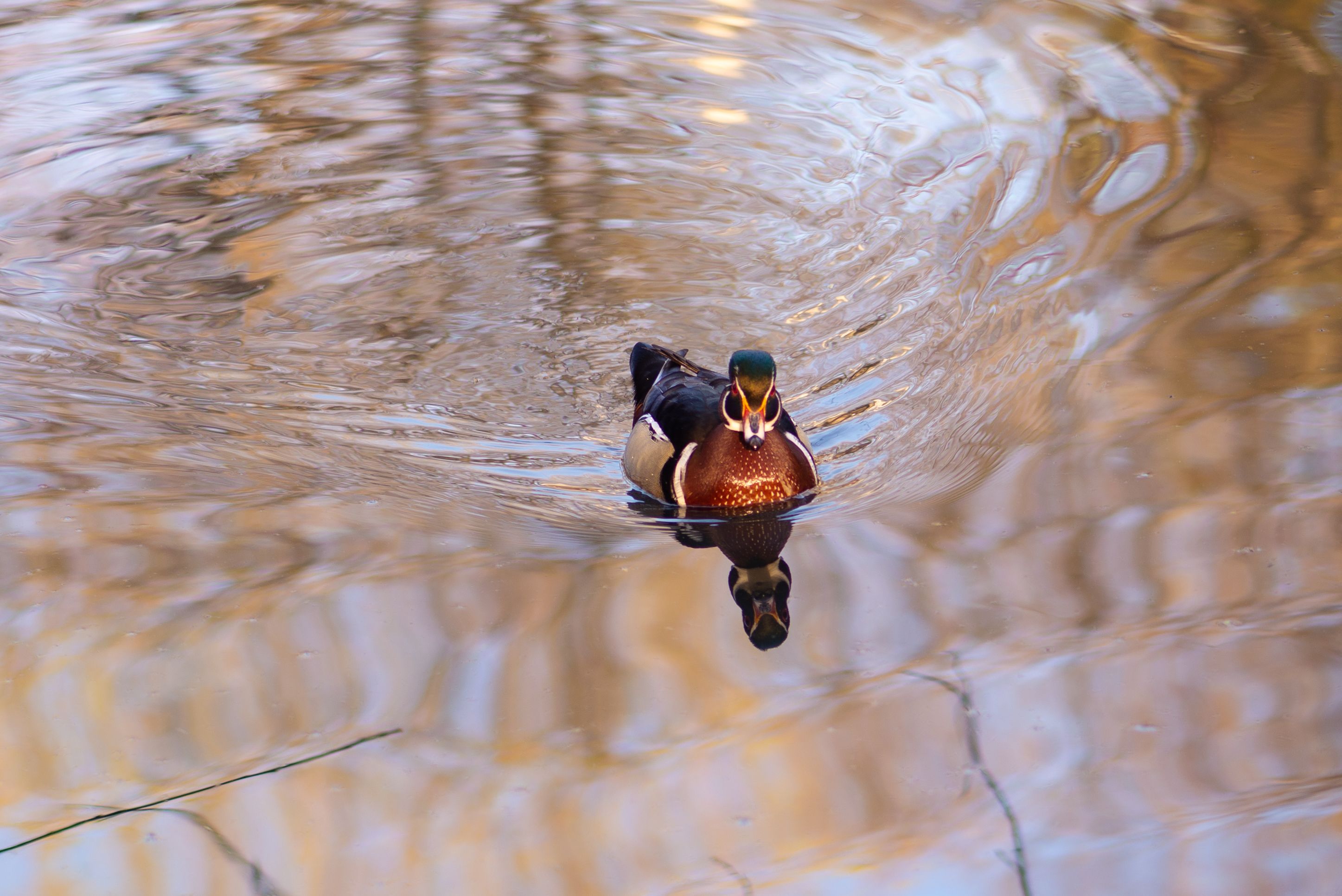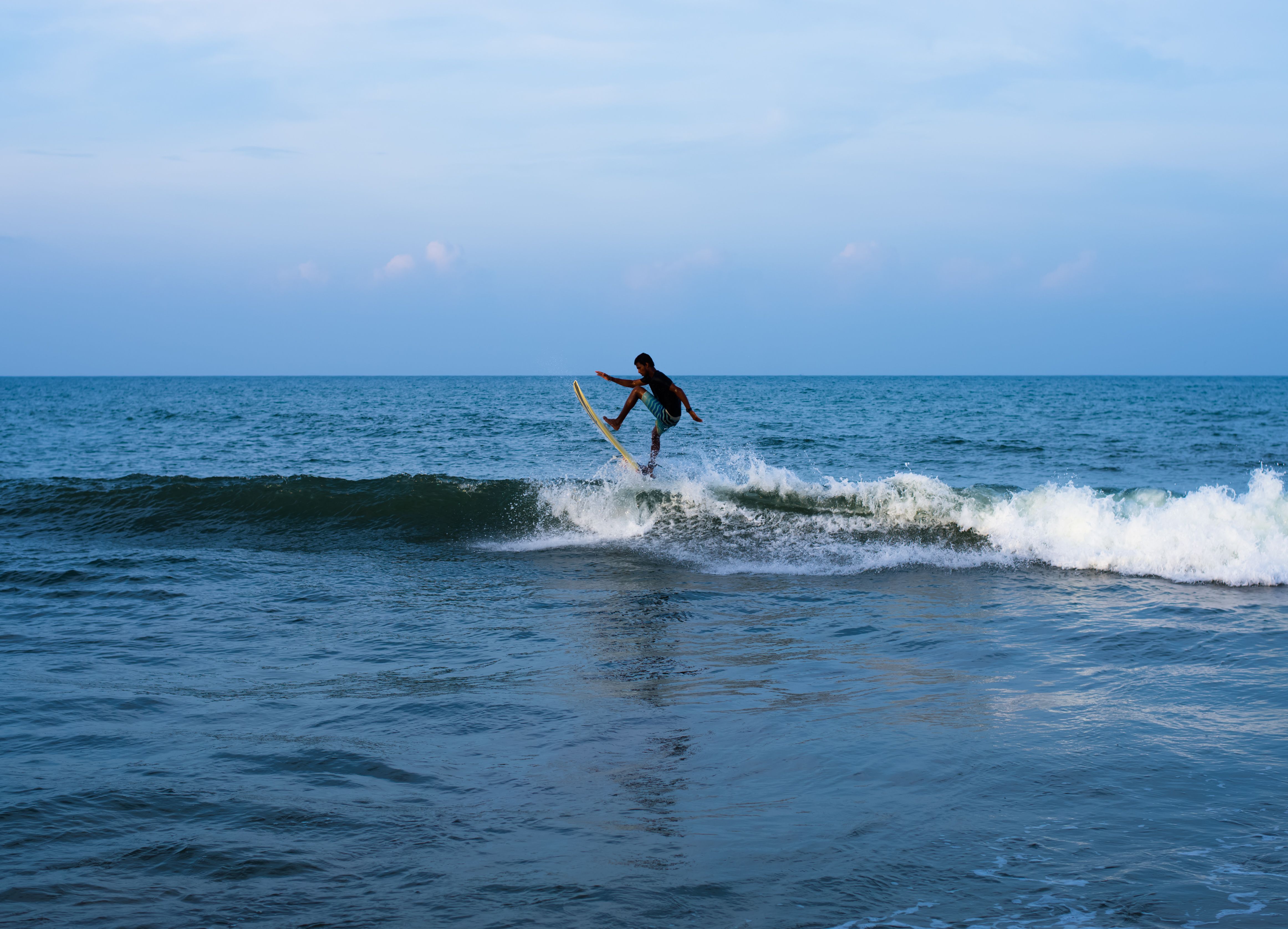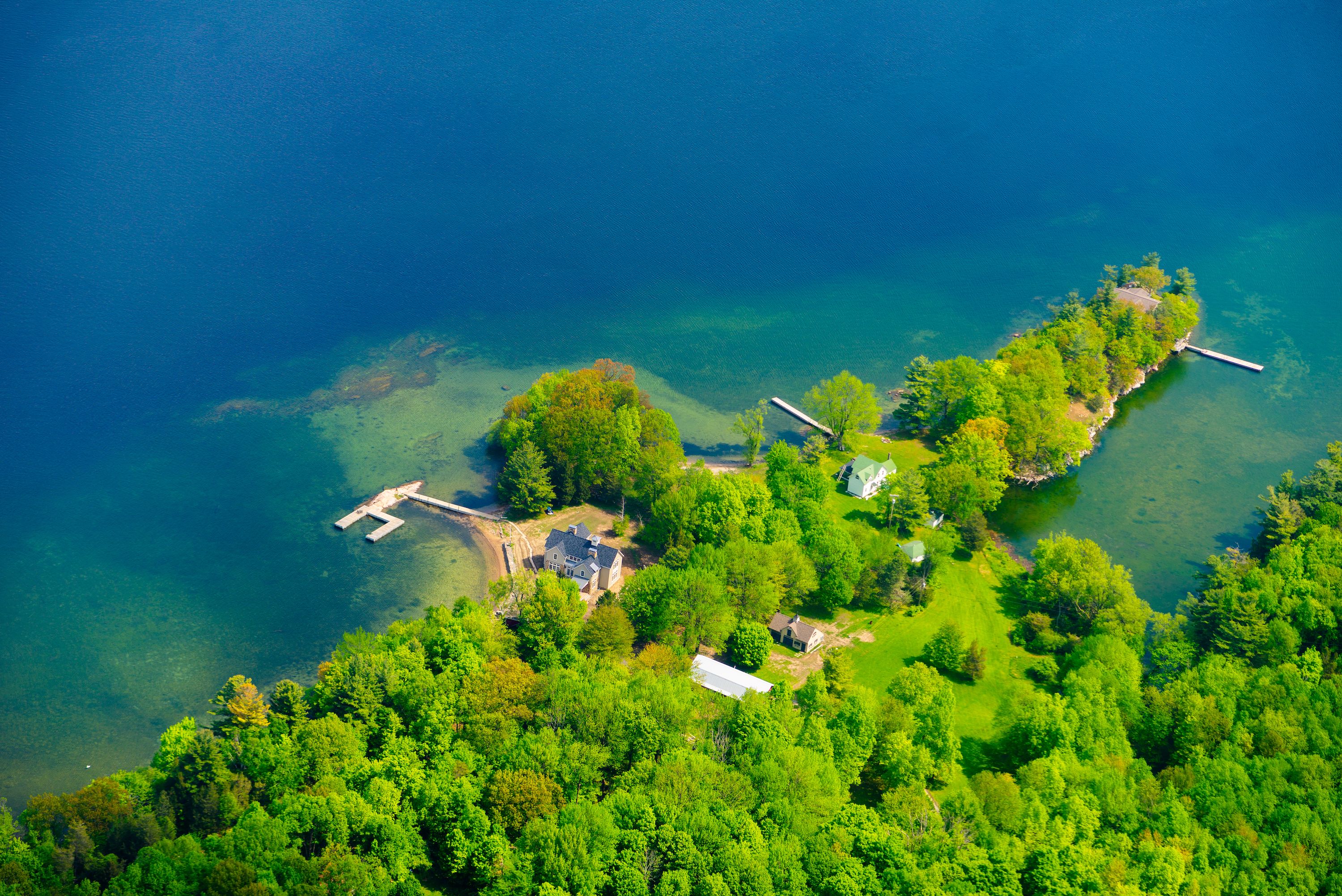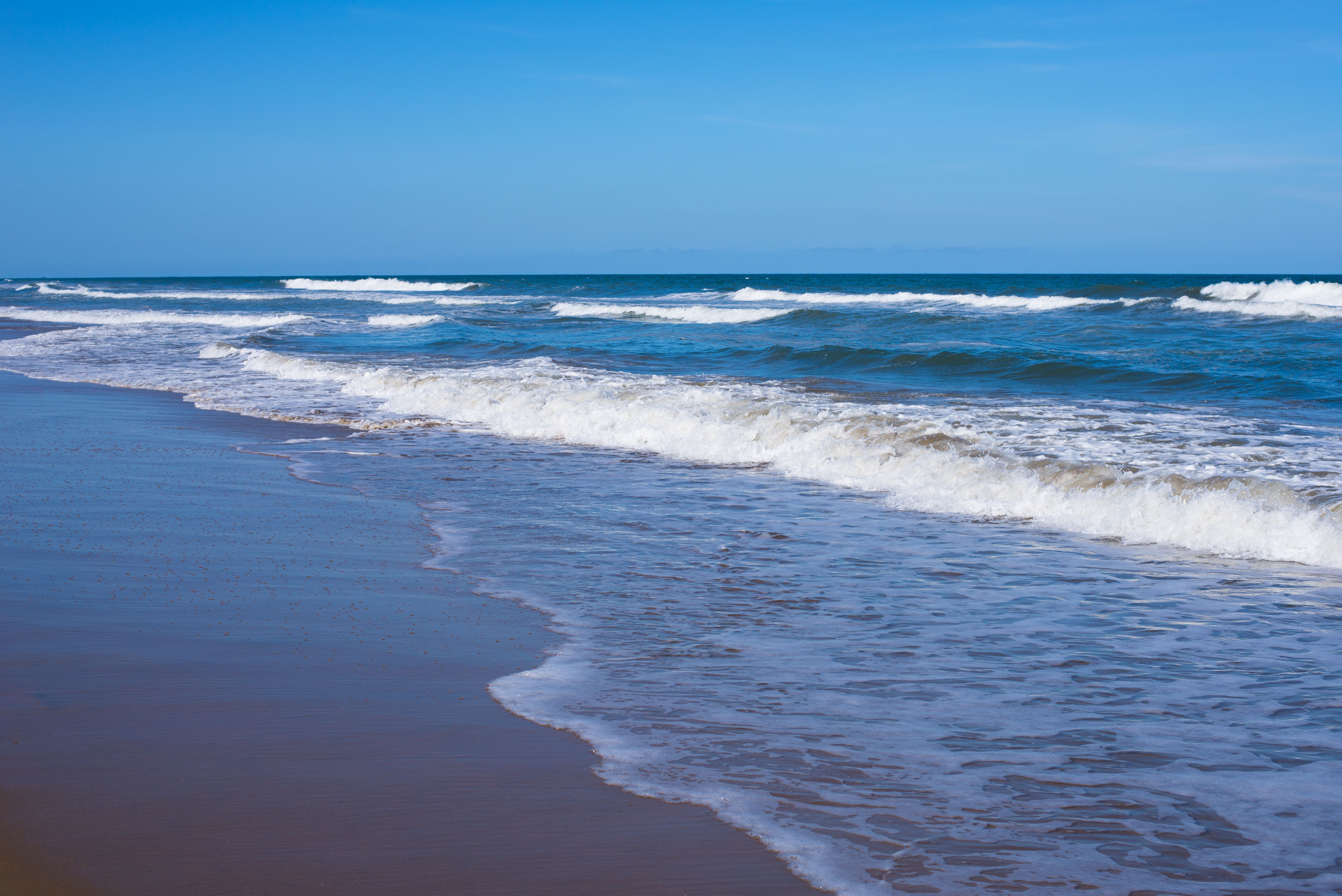Water bodies are some favorite subjects of photographers. From lakes and falls to rivers and oceans, every photographer spends considerable time capturing these calm places.
Also, psychologically we react positively to water. Water bodies give us a sense of tranquility and wisdom. So it is no wonder you're looking for tips to capture these beautiful places. Here's all you need to know.
1. Find Interesting Subjects
Have you stood near a lake or ocean mesmerized by it, then taken a photo, only to find it flat? A vast expanse of water doesn't work as a strong subject. For water photos to shine, you need a proper subject.
Try posing someone in front of the water body. Or, find sunrise, sunset, a floating leaf, a lonely tree, an interesting rock, a majestic bridge, a vibrant lighthouse—the possibilities are endless.
2. Start Early
As with any landscape photography, early mornings are the best time to shoot water bodies. The misty mornings with subtle light are perfect for capturing the beauty of a river or lake. What's more, mornings are great for finding unexpected subjects like birds and animals.
Not a morning person? You can try dusk to get the same impactful photos.
3. Use a Slow Shutter Speed
Slowing your shutter speed gives your photos a dreamy quality. For example, flowing water becomes milky and smooth when shot at a slow speed. Waterfall photos are excellent for experimenting with different shutter speeds. You can try different speeds to see the various effects it produces.
Remember to carry a tripod to take sharp photos, and keep your ISO low.
Don't lose hope if you cannot carry a tripod for any reason. Instead, place your camera on a stable rock or tree branch. If you have to shoot handheld, keep your shoulders close to your body and lean against a tree to take the shot.
4. Look for Reflections
Before shooting photos of a water body, take some time to compose your scene. Pay special attention to the things that are reflected off the surface of the water. Be careful not to cut off the reflections. Instead, capture a complete mirror image of the scene. It can make for a powerful composition.
Of course, you can also make the reflections your main subject, or use a slow shutter speed to blur them. There are many options; experimenting is the only way to find out what works for the shot you want.
5. Try a Filter
Filters are every landscape photographer's mighty weapon and are a must for any type of outdoor photography. You can choose two types of filters for photographing water bodies.
A polarizing filter can increase contrast and bring out the rich colors in your photos. It is a popular filter that is a staple in many photographers' bags.
You can also try a neutral density filter, it reduces the amount of light entering your camera. An ND filter can be handy if you want to shoot at a slower shutter speed on bright days.
6. Catch the Action
Just like slowing the shutter speed, there are benefits to increasing the shutter speed. You can freeze the action of water by bumping the shutter speed. This is great for capturing waves, waterfalls, and water splashes.
If your subject is a person or animal playing in the water, increasing your shutter speed can capture all the water droplets and splashes and add visual interest to your photos.
7. Shoot in Different Conditions
You can take amazing pictures of lakes, rivers, and oceans in the summer, but capturing them in different seasons can be a fun project. You can enjoy photographing the fall colors, the freshness of spring, and the tranquil snowy scenes of winter.
Also, don't let rainy days stop you from taking photos of water bodies. Embrace the weather and capture the rain drops falling on the water.
8. Get Close (Within Reason)
When you're photographing water, don't shy away from getting your feet wet. If you get close, you can get a different perspective from what you see from the shoreline. Plus, you can capture all the small details like pebbles, fishes, and rocks.
However, if you're going to do this, check your surroundings and make sure you're in a safe spot. Be vigilant about cliffs and slippery rocks. Having a buddy with you is good if you're going deep inside a forest.
9. Shoot From Different Perspectives
You can take pictures of the water from a kayak or boat. Better still, get an underwater casing for your camera and jump in the water to take some underwater photos.
Water is also a perfect subject for aerial photography. The birds-eye-view from above can be one-of-a-kind if you're in a lake or ocean with islands. In addition, there are usually helicopter tours in popular tourist attractions. So, no problem if you don't have a drone.
10. Go Monochrome
Water photos are perfect candidates for selective coloring and black and white effects. Try to find a vibrant subject like a red lighthouse, a yellow leaf, or a blue boat against a black and white water background. Also, look for textures in the water like bubbles, ripples, and so on.
11. Fix That Horizon
Want your water photos to look more professional? The most obvious mistake that newbie photographers make is a tilted horizon. Want straight horizons all the time? Switch on the grids in your camera and align your horizon to the lines before photographing.
If you're using a tripod, check the spirit level and ensure it is leveled.
Even if you don't get it right in the camera, you can quickly fix skewed horizons in post-production software.
12. Be Prepared
Electronic equipment and water don't belong together. But, when photographing water, getting some splashes and droplets on your camera is inevitable. So, pick a weatherproof camera or protect your camera with a case.
Bring towels and plastic bags with you, you can use these to keep your camera and lens dry.
It's Time to Dip Your Toes Into Water Photography
Water is one of the most compelling subjects to photograph. And, it is not very hard. The thumb rule is to know what different shutter speeds do to your final image. But, there is only one way to find out.
Get up early, pick the right gear, and head out to your nearest water body. Take time to set up your equipment and try different compositions. Then, start experimenting with various shutter speeds. Soon, you will be capturing dreamy images of water.

